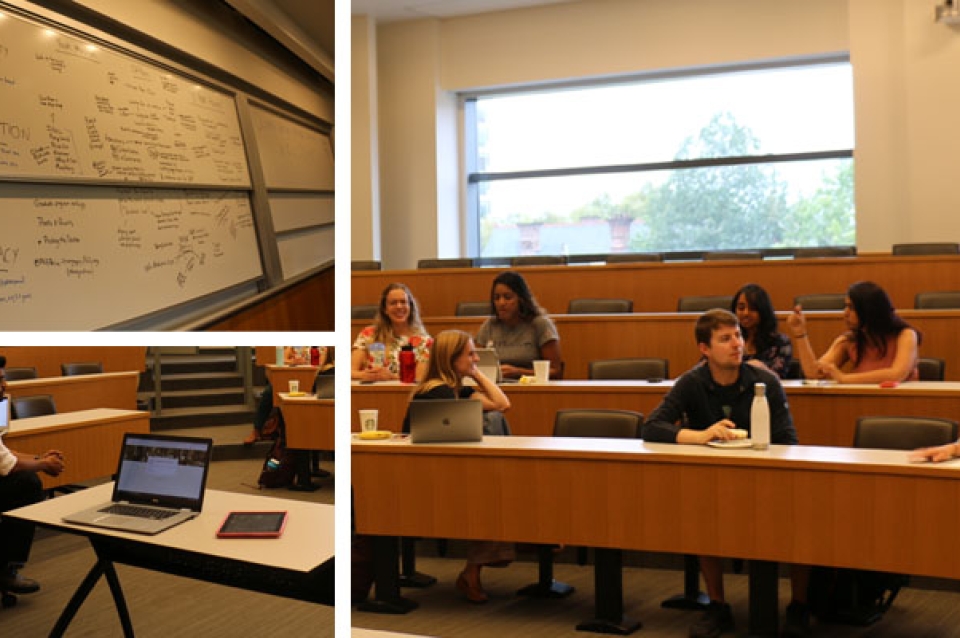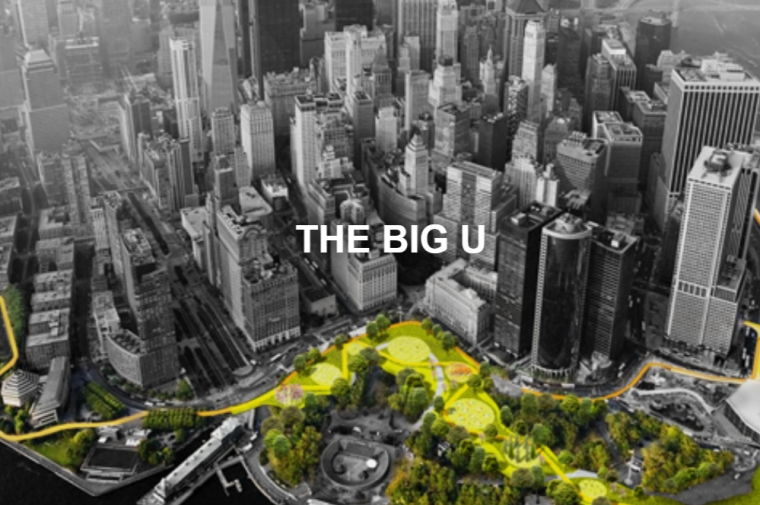September 18, 2019
Stuart Weitzman School of Design
102 Meyerson Hall
210 South 34th Street
Philadelphia, PA 19104
Get the latest Weitzman news in your Inbox
Areas
It was a drizzly Friday morning in September as grad students from the University of Pennsylvania started to trickle into room 350 at Huntsman Hall. They were greeted by Sid Radhakrishna, an enthusiastic Wharton MBA student with a friendly demeanor. The seats began to fill up, and by 9:00 AM there over 20 students representing most of the graduate schools at the university: School of Arts and Sciences, Engineering and Applied Science, Law School, Perelman School of Medicine, Stuart Weitzman School of Design, and The Wharton School. Sid started the meeting with a small introduction on the inspiration behind a graduate student climate change group.
“We have the privilege of being at one of the best research and educational institutions in the world, and I believe we can and should use that position to work with each other to address climate change, the greatest challenge our generation will have to face,” Sid said as he addressed the assembly of students. The group started last spring when a couple of Wharton grad students, motivated by the recent enthusiasm behind climate change action seen in the Green New Deal and the creation of the Sunrise Movement, started to throw around the idea of a University-wide student climate change group. As a Landscape Architect focused on urban resiliency at Penn’s Design School, I too was inspired by recent events and joined Sid and other Wharton grads for lunch to chat about visions and next steps. Sid went on to connect with other graduate students, such as Hayley McCurdy from the School of Arts and Sciences, who focuses on renewable energy production and investment, Jessica Grzyb from Engineering who works on energy storage and battery chemistry, and Dominic Powell from Penn Law who leads their Environmental Law Project. With a date set for September 6th the group was aiming to lay down some ideas, a mission, and goals.
Sid started us off with three pillars; community, education, and advocacy, then challenged us to think of how we saw the group managing these facets throughout time. We went around the room spit-balling ideas and one point kept coming up; the school lacked a cohesive space either virtually or physically where students can find all the information pertaining to climate change and how to become involved. With so much recent energy around climate change, the group saw itself primarily as a vehicle to channel that energy by connecting students to faculty, events, organizations, and projects around climate change.
Several Penn faculty and staff stopped in to join the conversation and provide input, these included; Helen Wiley and Carolyn Kousky from the Wharton Risk Management and Decision Processes Center, Matthijs Bouw from the Stuart Weitzman School of Design, Mollie Simon who manages Communications for Kleinman, Arthur Van Benthem and Witold Heenisz from the Wharton School. A group of us were talking to Helen Wiley from the Wharton Risk Center and she stressed the need for one location for climate change initiatives at the school, saying “when I started working here at Penn I couldn’t find one place from which to find all this information, I had to begin to pull it all together.” Students feel the same way. It takes about a year for a student to find all this school has to offer and by then, if you’re in grad school, you’re likely already halfway done.
The vision for this group, which calls itself Climate Action at Penn, is to extend beyond coalescing the information but also bridging departmental boundaries at the student level. Matthijs Bouw, who is head of the Urban Resilience Certificate program for the Design School, told us that’s it’s important to work both on the massive societal change that is necessary and about the imperative to adapt and mitigate quickly. These problems that we will be facing might require some give and take, working together and adapting to circumstances as they come up. Matthijs’ urban resiliency program aims to do that with classes in engineering, architecture, urban planning, landscape architecture, and energy management. During the Friday event I learned about other students’ projects such as: battery energy storage, sustainable cement production, and policy around clean water in the Delaware river. I believe all of these topics would require design, and underscore why designers at Penn should know about other school’s climate change initiatives. If we are going to solve the problems created by climate change, then architects, planners, and landscape architects need to breakout of the Meyerson Hall silo, meet up with Wharton students, get to know engineers, and work with scientists and law students, because when waters start to rise it’s going to take all of us to solve the problem.
Katie Pitstick is a Landscape Architect in the MLA program and in the Urban Resiliency Certificate program at the Stuart Weitzman School of Design.
See Climate Change at Penn Now's facebook page for upcoming infromation
See Urban Resilience Certificate Information at link


 Expand Image
Expand Image

